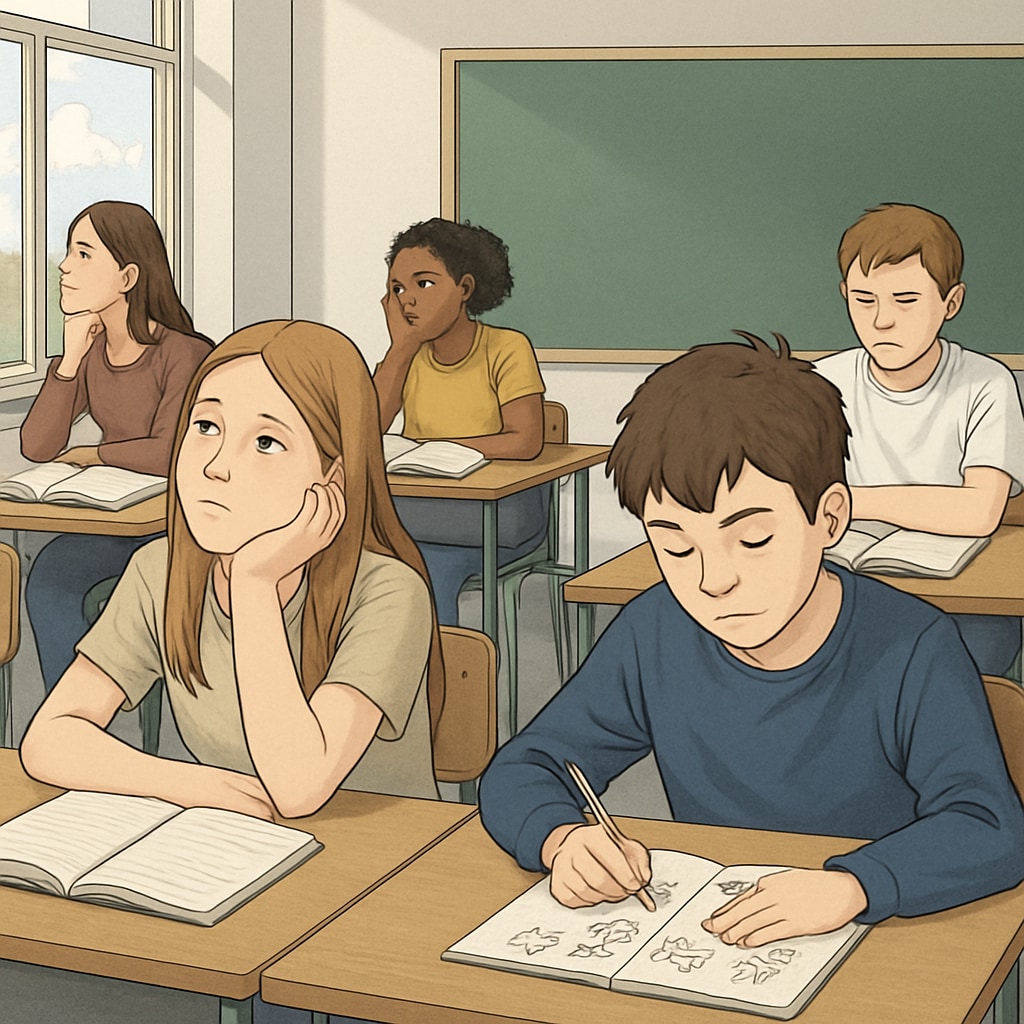Across the globe, students in K12 classrooms are increasingly reporting feelings of boredom. From the bustling cities of the United States to rural villages in Senegal, a shared sentiment has emerged: disengagement in the classroom is a widespread issue. This phenomenon of “classroom boredom” is becoming a hidden but significant obstacle in modern education environments. By examining its causes, impacts, and potential remedies, we can better understand how to address this global challenge.
Causes of Classroom Boredom in K12 Education
Boredom in classrooms stems from a variety of factors, many of which are deeply rooted in traditional educational practices. Here are some of the primary causes:
- Lack of Relevant Content: Students often feel disconnected from lessons that fail to relate to their real-world experiences or future aspirations.
- Outdated Teaching Methods: Rote memorization and lecture-heavy approaches leave students unengaged, especially in an era dominated by interactive technology.
- Overloaded Curriculums: In some countries, students are burdened with excessive material, leading to mental fatigue and disinterest.
- Limited Student Autonomy: The absence of choice in what or how to learn can suppress creativity and intrinsic motivation.

The Impacts of Global Classroom Boredom
The consequences of classroom boredom are far-reaching, affecting not just academic outcomes but also students’ overall development. Key impacts include:
- Lower Academic Performance: Disengaged students are less likely to retain information, participate in discussions, or excel in assessments.
- Decrease in Lifelong Learning Skills: Boredom can hinder the development of curiosity and critical thinking, skills essential for future success.
- Psychological Strain: Persistent boredom can lead to feelings of frustration, self-doubt, and even anxiety over academic tasks.
- Global Inequities: While developed nations may have resources to address this issue, under-resourced regions face greater challenges in combating classroom disengagement.
For example, studies conducted by UNESCO have highlighted that students in low-income nations often experience boredom due to insufficient teaching materials and undertrained educators (UNESCO on Education). Similarly, research from the U.S. Department of Education underscores that even in well-funded schools, outdated pedagogies contribute to disengagement (U.S. Department of Education Data).

Solutions to Rekindle Student Engagement
Addressing classroom boredom requires a multifaceted approach that involves educators, policy-makers, and communities. Here are some strategies that can help:
- Innovative Teaching Practices: Incorporating project-based learning, gamification, and interactive technologies can make lessons more engaging.
- Personalized Learning: Tailoring educational experiences to individual interests and strengths can boost motivation and relevance.
- Empowering Educators: Providing teachers with ongoing professional development and resources to innovate their classrooms.
- Global Collaboration: Sharing best practices across nations can help address disparities and improve overall education systems.
Countries like Finland have set an example by prioritizing student-centered learning approaches, which have been proven to increase engagement and academic success. Similarly, initiatives in India focused on digital learning are bridging gaps in traditional teaching methods, offering promising results for rural communities.
While these solutions require investment and effort, the benefits of fostering a more engaged classroom environment are undeniable. By ensuring students are actively involved in their education, we can pave the way for a brighter and more equitable global future.
Readability guidance: This article balances concise paragraphs with actionable lists, ensuring clarity. Transitions like “however” and “for example” are used strategically to maintain flow, while passive voice remains minimal.


